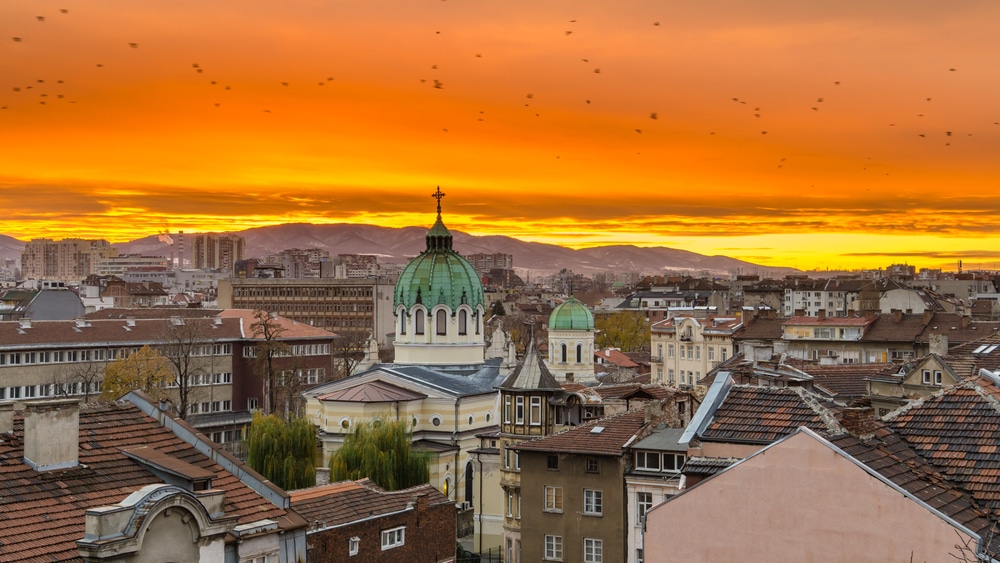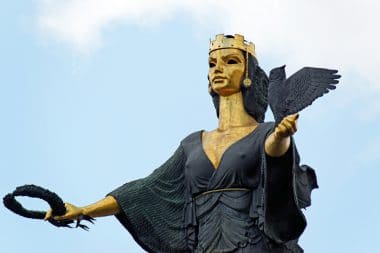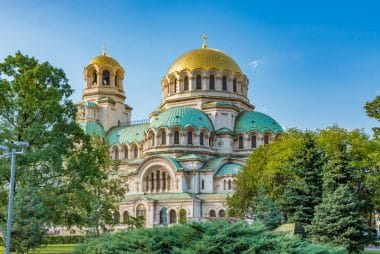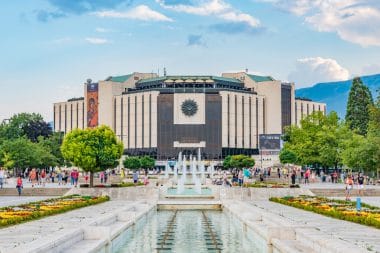
When planning a city trip , Sofia is usually not the first thing that comes to mind, although the capital of Bulgaria is one of the oldest cities in Europe and has a lot of historical, cultural and gastronomic interesting things to offer.
General information about Sofia
The eventful history of Bulgaria is easily recognizable in the cityscape of Sofia and the legacies of Byzantines, Romans and Ottomans are just as obvious as those of socialism. Sofia has been changing since the 1990s and impresses with many contrasts. On the one hand, the grey, partly run-down prefabricated housing estates are still omnipresent, while chic boutiques, modern galleries and inviting restaurants are lined up, especially in the shopping streets of the city centre.
If you are interested in architecture, the beautiful villas from the Wilhelminian period and Art Nouveau always stand out. Sofia is the only European capital that has a local mountain for skiing or hiking in the immediate vicinity. The 278 km² Vitosha Mountains at the gates of the city are an extremely attractive local recreation area for the 1.2 million Sofia residents and the mountains, some of which are more than 2000 m high, are considered a perfect region for active holidays among Bulgarian holidaymakers.
The main sights of Sofia

The cityscape of the Bulgarian capital is characterized by buildings from different eras and cultures. Countless imposing magnificent buildings are popular photo motifs and are worth a visit. The best example of this is the so-called “square of tolerance”. Here, a Jewish synagogue, a Catholic and an Orthodox church as well as a mosque are close to each other. The Banja Bashi Mosque with its high minaret was built in the 16th century by the well-known master builder Sinan and is one of the oldest mosques in Europe. It commemorates the time of Ottoman rule in Bulgaria and is the only one of the city’s former 80 mosques that is still in operation today. Sofia is surprisingly green – everywhere small and large parks invite you to relax, walk and linger. The beautiful complex directly behind the Square of Tolerance is also recommended as an oasis of peace during a sightseeing tour.

The early Christian church is believed to have been built by the Romans in the 4th century and is considered to be the oldest building in the city. It is located right next to the archaeological site of ancient Serdica and is particularly famous for its ancient frescoes. In the Boyana Church in the district of the same name, several layers of wall paintings were also discovered, which date back to the 10th century. The church, which was built in several construction phases, was added to the UNESCO World Heritage List in 1979, as it is one of the few completely preserved churches from this early period.
The city’s museums
Special features in Sofia

An unusual sight for foreigners is the so-called “knee shops” or “Klek shops”. These kiosks, which are housed in basements, sell a huge range of everyday goods, which can be ordered while crouching through a small hatch. Another curiosity are the elevated wooden houses, which can often be seen next to the traffic lights on busy streets and intersections. These are control points where the traffic lights can be operated manually by police officers, for example if special traffic control is necessary due to a major event or a state visit.
Typical specialties
General Travel Information Sofia
Sofia attracts with a lot of culture, delicious food, countless nice cafés and extremely reasonable prices. In the small shops and on the colourful markets, tasteful souvenirs can be bought well. A shopping experience in a class of its own is the luxury department store ZUM in the city center. Built in the 1950s, the seven-storey building offers a wide range of goods, from branded clothing from all famous fashion labels to all kinds of electronics. The covered courtyard is also architecturally interesting.
For a trip to Sofia, you should plan at least three full days. The months of May to September are ideal in terms of weather, because then it is usually warm but not too hot. The maximum temperatures in July and August average 27°C. The city is also wonderful for a combination tour of sightseeing program and active vacation in the Vitosha Mountains. Whether you come here for hiking and climbing or skiing and snowboarding, the fantastic view of Bulgaria’s capital is free of charge.

